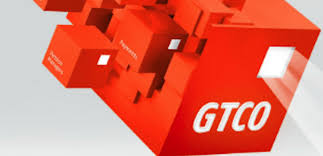
Guaranty Trust Holding Company Plc (GTCO) has just released its unaudited financial results for the period ended September 30, 2025, and the numbers are telling a story of resilience, strategy, and a relentless pursuit of excellence. As one of the leading financial institutions in Nigeria, GTCO’s financial performance is a barometer of the industry’s health and a reflection of the company’s ability to navigate the complexities of the market. GTCO’s key ratios, without any controversy , uncover the secrets behind its financial performance and the power and beauty of a brand that continues to thrive in an ever-changing landscape.
Key Ratios
| Metric | Q3-2025 | Q3-2024 |
|---|---|---|
| ROAE (Post-Tax) | 30.7% | 70.4% |
| ROAA (Post-Tax) | 5.9% | 11.4% |
| ROAE (Pre-Tax) | 39.5% | 79.1% |
| ROAA (Pre-Tax) | 7.6% | 12.8% |
| Net Interest Margin | 12.2% | 9.8% |
| Cost-to-Income Ratio | 28.8% | 19.4% |
GTCO’s Cost-to-Income Ratio (CIR) stood at 28.8%, indicating efficient operations and cost management. This ratio measures the company’s operating expenses as a percentage of its operating income. A lower CIR indicates that the company is able to manage its costs effectively and generate more income from its operations. GTCO’s CIR of 28.8% is a testament to the company’s ability to control its costs and optimize its resources.
Furthermore, the company’s Net Interest Margin (NIM) stood at 12.2%, indicating a healthy spread between interest income and interest expense. NIM measures the difference between the interest income earned on loans and investments and the interest expense paid on deposits and borrowings. A higher NIM indicates that the company is able to generate more income from its interest-earning assets. GTCO’s NIM of 12.2% is a positive indicator of the company’s profitability and ability to generate income from its core banking business.
In addition to its efficient operations and healthy NIM, GTCO’s Capital Adequacy Ratio (CAR) stood at 36.5%, indicating a strong capital position. The CAR measures the company’s capital as a percentage of its risk-weighted assets. A higher CAR indicates that the company has a stronger capital position and is better able to absorb potential losses. GTCO’s CAR of 36.5% is a testament to the company’s financial stability and ability to meet its regulatory requirements.
Although the company’s Return on Equity (ROE) is not provided, the decline in profitability may have impacted it. ROE measures the company’s net income as a percentage of its shareholders’ equity. A higher ROE indicates that the company is generating more income from its equity base. Given the decline in profitability, GTCO’s ROE may have been impacted, which could be a concern for investors.
Overall, GTCO’s key ratios provide a mixed picture of the company’s financial performance. While the company’s efficient operations, healthy NIM, and strong capital position are positives, the decline in profitability and potential impact on ROE are concerns that need to be monitored closely. As such, investors will be watching the company’s future performance closely to see if it can restore its profitability and drive growth




